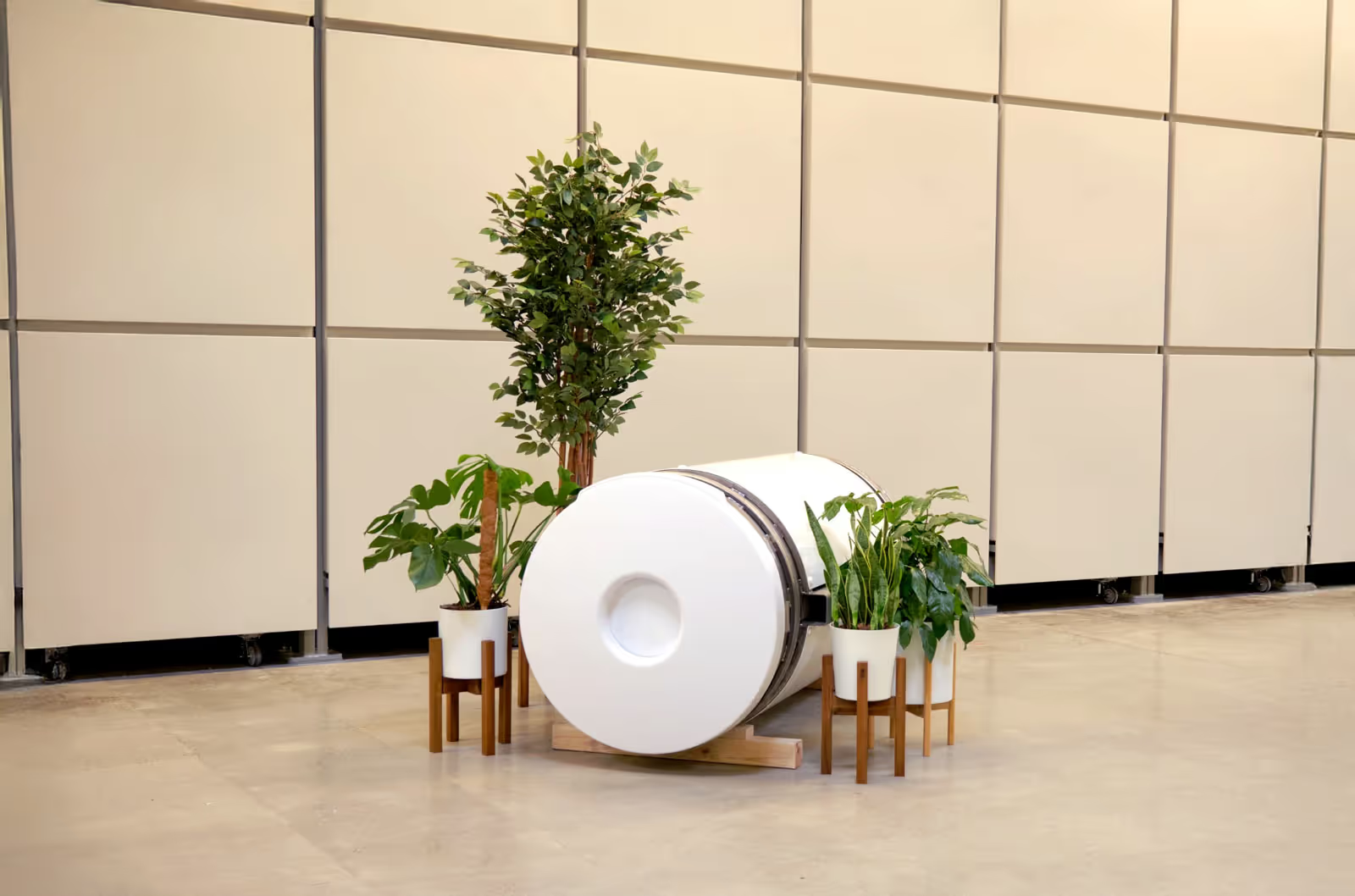
Human Composting vs Aquamation: A Comparative Analysis
by
Team Earth


by
Team Earth
Human Composting 101
|
December 3, 2023
As the world is becoming increasingly eco-conscious, many people are starting to rethink how to say goodbye to their loved ones. Traditional burial and cremation pose numerous risks to the environment, in turn, greener alternatives such as aquamation and human composting are being considered as more sustainable end-of-life options. These green burial options often come with a range of benefits beyond just being environmentally friendly.
Eco-friendly disposition methods are often much more affordable than their traditional counterparts and they can offer beautiful ways to memorialize one’s loved ones.
In this guide, we look at the differences and similarities between aquamation and human composting as well as how they compare to more traditional methods. We explain how they work, their environmental benefits, legality by state, and cost considerations. We also offer some useful considerations on how to choose the most suitable green burial option for you.
Understandably, some people may be wary of non-traditional forms of burial. While these are still relatively new methods, aquamation and human composting are dignified, sustainable and beautiful ways to give one’s loved ones the send off they deserve.
Aquamation, otherwise known as "Alkaline hydrolysis’ or ‘water cremation’, refers to the process of decomposing a body by immersing it in a pressurized metal cylinder filled with a mixture of water and alkaline chemicals such as potassium hydroxide.
This disposition method typically uses heat, pressure, water and lye in a dedicated hydrolysis chamber. The end product is a benign liquid known as hydrolysate.
After the alkaline hydrolysis process is complete, the bones are removed from the solution, dried, and reduced to a white ash-like dust, which is then placed into an urn for the relatives to take home.
Human composting, also known as ‘terramation’, ‘natural organic reduction’, or ‘soil transformation’, refers to the process that uses the principles of nature to transform bodies into nutrient-rich soil.
The body is placed inside a vessel with a careful balance of carbon, nitrogen, oxygen and water, and optimal temperature and moisture levels that in turn create the perfect conditions for naturally occurring microbes to break the body down on a molecular level.
Over a period of up to 30-45 days, the body becomes a healthy soil amounting to around one cubic yard. At Earth, families can decide how much of the soil they would like to keep for memorialization purposes and how much to donate to conservation sites.
Learn more about the human composting process here, or visit our most frequently asked questions here.
{{CTA-14-question}}
The legality of green burial methods such as human composting and aquamation varies by state. Here’s a quick rundown of the legality of aquamation and human composting in the US.
Aquamation is currently legal in 28 states, however, not all states have funeral service providers who have adopted the technology. To get a full list of the legal status of aquamation across all US states, visit our aquamation tracker here.
Why is aquamation illegal in other states? Oftentimes, it simply comes down to a lack of public awareness, however, misunderstanding, misinformation and other legislative factors can fuel opposition too. Aquamation also raises some concerns with regards to water conservation as the process requires around 300 gallons of water per body.
Human composting is currently legal in twelve states, including Maine, Minnesota, Maryland, Delaware, Arizona, California, Colorado, Nevada, New York, Oregon, Vermont, and Washington. Other states in the process of either drafting legislation or bringing laws into effect include Illinois, Massachusetts, and Minnesota. Stay up to date with the legal status of human composting across all US states here.
Although not as widespread as aquamation currently, human composting is gaining legal and community support and approval at a rapid pace.
It is worth noting that one may be able to have a body transported across state lines if one’s state doesn’t currently permit the human composting process.

While aquamation boasts many green advantages, human composting could prove to offer a greater positive environmental impact. Both processes use much less energy than traditional burials and cremations, and they don’t require the use of land.
Human composting helps to replenish the Earth’s steadily decreasing amount of soil organic matter and requires the use of far less water with each disposition.
Because the cremation process involves burning natural gas at temperatures as high as 2,000 degrees Fahrenheit, it can release vast quantities of carbon dioxide into the air. A recent study suggests that cremations in the USA alone account for over 360,000 metric tons of annual carbon emissions.
According to the Environmental Protection Agency (EPA), cremations in the USA also produce around 1.8 million tons of mercury emissions each year.
You might assume that because they don’t require heat, traditional burials are greener than cremations, but they are actually around 10% more damaging to the environment overall (according to a study on the environmental impacts of funerals carried out in Australia).
Burials require a lot of natural resources – millions of board feet of hardwood and dozens of acres of land per year, plus approximately 5.3 million gallons of embalming fluid that contain carcinogenic materials. Additionally, the non-biodegradable concrete, bronze, and plastic that goes into grave liners make traditional burials very harmful to our natural environment.
Conservative estimates put the area of land dedicated to cemeteries in the United States at 140,000 acres.
Aquamation uses less energy and produces 90% less carbon emissions than traditional cremations.
The remains from the aquamation process are placed in an urn and returned to the family. This means that aquamation as a body disposition method requires little to no use of land.
One of the shortcomings of aquamation concerns water conservation. Overall, aquamation uses about 1,300 liters of water, which is heated for many hours using energy. While the resulting liquid remains are sterile, they usually go back into our water systems.
Human composting can be considered one of the most environmentally friendly methods as it requires little energy (often re-usable) and as opposed to using up land, it instead helps to replenish soil in already challenged eco-systems. It only uses about an eighth of the energy of a flame cremation and compared to aquamation, it requires no artificial heat. This all could help save enough energy to power nearly 50,000 homes a year.
{{CTA}}
Dealing with the burial or disposition of a recently deceased loved one is among life’s biggest challenges, and high costs can only add to this stress. Fortunately, while fees can’t be ignored, the fact that green burials can prove to be more affordable is welcoming news.
So, how do the costs of aquamation and human composting compare to traditional burials and cremations?
The cost of traditional methods of body disposition in the United States tend to be on the higher end. The average casket for a traditional burial costs up to $5,000, and the burial plot can cost anything from $500 to $10,000. You also need to factor in funeral service and embalming fees.
As you won’t need to pay for a casket, cremation fees are usually more affordable than burials. Although, even with the cost of a casket removed, a cremation service and funeral could cost an average of $7,000.
Like cremation, aquamation tends to be more affordable than traditional burials as you will not need to purchase a burial plot, headstone, or casket. The average cost of aquamation can be up to $4,000 depending on the state.
With human composting all associated costs with caskets, burial plots, and headstones can be eliminated. Costs range from just under $5,000 to just over $7,000, and it’s worth noting that Earth offers a Prepaid Service, which allows you to plan ahead and make monthly payments towards the cost of your funeral.

In conclusion, these could be some of the factors you could consider when choosing your preferred type of funeral:
If sustainability is a top priority, human composting is the top choice. The soil from the transformative process becomes a means to return nutrients from our bodies to the natural world and we can restore forests, sequester carbon, and revitalize challenged ecosystems.
Laws and regulations regarding eco-friendly disposition methods can vary from state to state and they’re subject to continual change. As these processes become more accepted, they also become more available. Remember to stay up to date using our online legality trackers.
Aquamation, while typically less expensive than human composting, lacks the eco-friendly impact and unique opportunity human composting offers for individuals to directly contribute to the nurturing of the earth. Despite its higher cost, human composting represents a more sustainable and impactful choice for those seeking an environmentally conscious send off.
Irrespective of the way one decides to use the soil that is produced from the soil transformation process, it can prove to be one of the most significant ways to memorialize those that have passed. With beautiful nature conservation sites which will soon be open for visitors and soil that can be planted at home in special and sentimental ways, human composting can offer the green and eternal memorialization.
By choosing human composting, individuals choose a practice that not only symbolizes a return to nature but also offers a perpetual gift to the earth, fostering new life and growth in a deeply personal and sustainable way. Embracing this as a final act creates a legacy that transcends the traditional ways, ensuring that one’s memory lives on through the cycle of new life.
Human composting is a great choice for nature lovers, conservationists and those who want to protect the planet for future generations. Read more about Earth's services or get an instant online quote for prepaid or at-need plans.

Soil Transformation
On a recent episode of 50+ & Unfiltered, Stewart casually shared that she plans to skip burial and cremation entirely: “Oh, I’m going to be composted. These coffin things and all that stuff? No way.”
12/8/2025
3 min read

Green Funeral Practice
As families consider human composting as an alternative to cremation and burial, questions naturally arise about what happens to bones, dental work, and medical implants during the process.
11/5/2025
4 min read